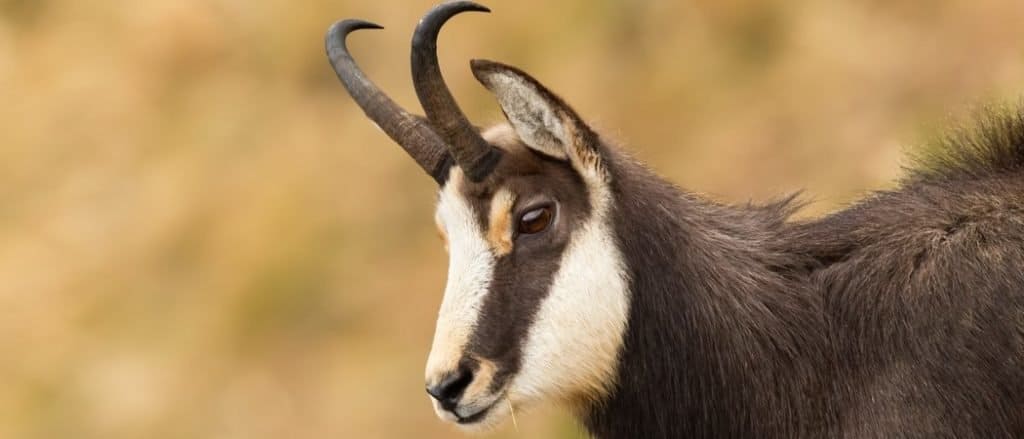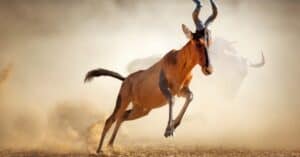You normally associate birds with grace and superb flying skills. However, this bird also has brute strength! In this clip, we see a juvenile chamois that has strayed too close to the cliff’s edge. This puts it in an ideal position to be grabbed by an eagle, which is exactly what happens. Even though the bird is huge, it soon realizes it has taken on more than it can manage. First, it releases the grip from one foot and then the other. The chamois plummets to a certain but mercifully quick death. Its carcass will feed two of these eagles for days. It will enable them to build their fat reserves for the winter ahead.
Watch the Spectacular Grab Now
What Exactly Is a Chamois?
Chamois are small, hoofed animals that look like a cross between a goat and an antelope and are sometimes called goat antelopes. Their scientific name is Rupicapra rupicapra, a member of the Rupicapra genus. As members of the Bovidea family, they are related to bison, water buffalo, and sheep. They are a native species of Europe and some parts of Asia, where you will find them in mountainous and rocky habitats. Their typical habitat comprises alpine and subalpine meadows. During the winter, they move to forested areas and steep slopes to avoid the snow. Adults can reach over 120 pounds, and this juvenile would not have been easy to lift off the ground! Babies are much easier targets. There are seven subspecies of goat antelopes living in different locations.
How Do Chamois Normally Behave?

Wolves, lynxes, leopards, and eagles hunt chamois.
©WildMedia/Shutterstock.com
These herbivores spend most of their time eating. They feed mainly on grass, herbs, and flowers. During winter, they feed on bark, needles, and mosses. However, they can survive without food for up to two weeks!
They are most active during the day. Females live in herds of between 15 and 30 animals, but the males lead solitary lives. When danger (such as a hungry eagle) is near, they can be seen stamping their feet and whistling to warn their herd mates. These guys can also make spectacular leaps to inaccessible areas to evade predators. Unfortunately, that does not help when you are being attacked from above!
One of their top predators is the grey wolf, but Eurasian lynxes and Persian leopards also hunt them. Some brown bears eat them, and, as we see here, they can also be opportunistically plucked off the hillside by eagles!
The photo featured at the top of this post is © Real PIX/Shutterstock.com
Thank you for reading! Have some feedback for us? Contact the AZ Animals editorial team.






